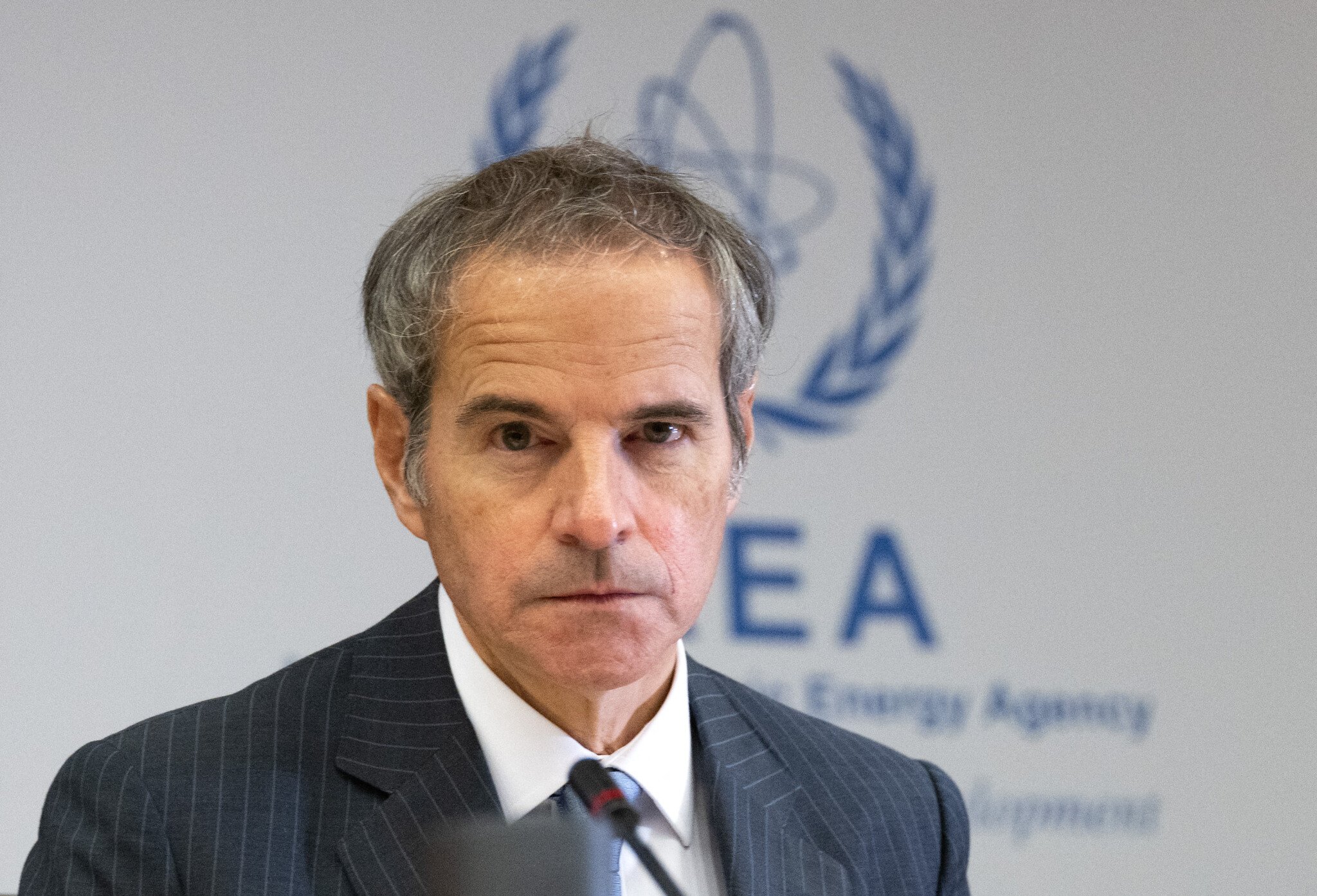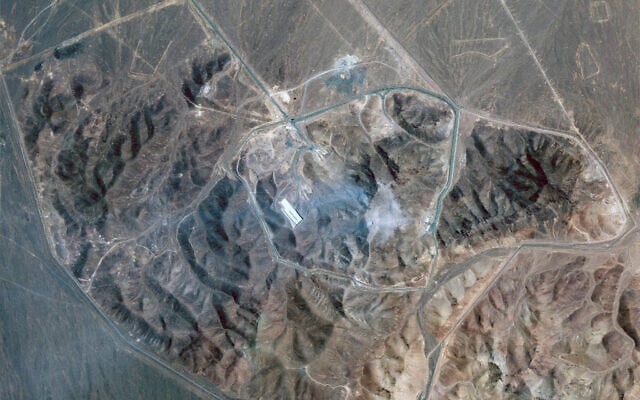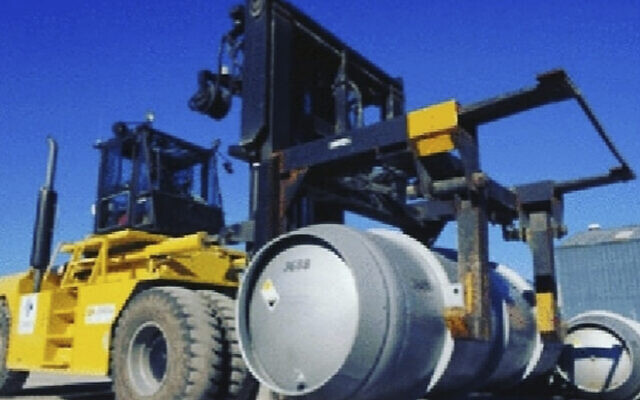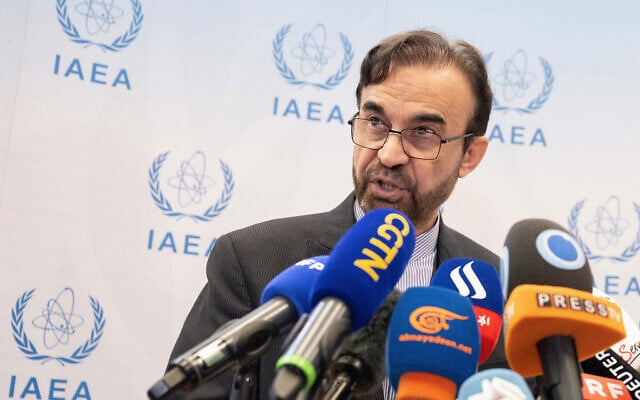



VIENNA — US bombing probably caused “very significant” damage to the underground areas of Iran’s Fordo uranium enrichment plant dug into a mountain, though no one can yet tell the extent, UN nuclear watchdog chief Rafael Grossi said on Monday.
He further called for International Atomic Energy Agency inspectors to be able to return to Iran’s nuclear sites in a bid to “account for” its highly enriched uranium stockpiles.
The United States dropped the biggest conventional bombs in its arsenal on Iranian nuclear facilities on Sunday, using those bunker-busting munitions in combat for the first time to try to eliminate sites including the Fordo uranium-enrichment plant dug into a mountain.
“At this time, no one, including the IAEA, is in a position to have fully assessed the underground damage at Fordo,” Grossi said in a statement to an emergency meeting of the International Atomic Energy Agency’s 35-nation Board of Governors.
The IAEA has not been able to carry out inspections in Iran since Israel started its military strikes on nuclear facilities there.
Israel says its sweeping assault, which began June 13, on Iran’s top military leaders, nuclear scientists, uranium enrichment sites, and ballistic missile program, is necessary to prevent the Islamic Republic from realizing its avowed plan to destroy the Jewish state. Iran has responded with missiles barrages at Israeli cities that have killed dozens and injured thousands.
“Given the explosive payload utilized and the extreme vibration-sensitive nature of centrifuges, very significant damage is expected to have occurred,” Grossi added referring to the US bombing.
“Craters are now visible at the Fordo site,” he said.
Iran, which has vowed to destroy the Jewish state, insists that its nuclear program is peaceful; however, it has been enriching uranium to levels that have no peaceful application, has obstructed international inspectors from checking its nuclear facilities, and has greatly expanded its ballistic missile capabilities.
“Iran, Israel, and the Middle East need peace,” Grossi told the IAEA meeting. “For that, we must take a number of steps.”
“First of all, we must return to the negotiating table and for that allow IAEA inspectors — the guardians on our behalf of the NPT (nuclear non-proliferation treaty) — to go back to Iran’s nuclear sites and account for the stockpiles of uranium, including, most importantly, the 400 kilograms enriched to 60 percent.”
Beyond the level of damage done to Fordo’s underground enrichment halls, one of the biggest open questions is the status of Iran’s stock of 60% enriched uranium, a short step from the roughly 90% that is weapons grade.
That is enough, if enriched further, for nine nuclear weapons, according to an IAEA yardstick.
Iran did, however, inform the IAEA on June 13 that it would take “special measures” to protect its nuclear materials and equipment that are under so-called IAEA safeguards, the oversight provided for by the nuclear Non-Proliferation Treaty, Grossi said.
“In my response that same day, I indicated that any transfer of nuclear material from a safeguarded facility to another location in Iran must be declared to the agency,” Grossi said.
“Any special measures by Iran to protect its nuclear materials and equipment… can be done in accordance with Iran’s safeguards obligations… This is possible.”
Meanwhile, Iran’s ambassador to the IAEA, Reza Najafi, condemned the “unprecedented act of aggression” against Iranian nuclear facilities by Israel and the US and said that this act “delivered a fundamental and irreparable blow” to the international non-proliferation regime, including the framework of the Non-Proliferation Treaty.
Speaking to reporters at the emergency meeting, Najafi said that Iran reserves its right to self-defense.
“As long as the source of the threat persists, the Islamic Republic of Iran will continue to undertake the necessary, resolute and proportionate measures to neutralize it at the time, place and manner of its own choosing.”
Iran’s underground enrichment site at Fordo was again attacked Monday, Iranian state television reported.
The report, also carried by other Iranian media, offered no word on damage.
The IDF confirmed carrying out a strike against the access roads to Fordo, saying the bombings were intended to “disrupt” the site’s accessibility. It came as Israel conducted airstrikes throughout the day in Iran.
Iran previously agreed to limit its uranium enrichment and allow international inspectors access to its nuclear sites under a 2015 deal with the US, France, China, Russia, Britain, and Germany in exchange for sanctions relief.
But after President Donald Trump pulled the US unilaterally out of the deal during his first term, Iran began enriching uranium up to 60% and restricting IAEA access to its nuclear facilities.
Iranian officials have claimed that the enriched uranium stockpile was relocated to an undisclosed location before its nuclear sites were destroyed. Prime Minister Benjamin Netanyahu on Sunday claimed in a video statement to have “interesting intel” about where the stockpile might be, but did not elaborate. US Secretary of State Marco Rubio said the US believes a significant amount of the uranium stockpile was located in the Isfahan facility, another nuclear site that was targed by the US.



